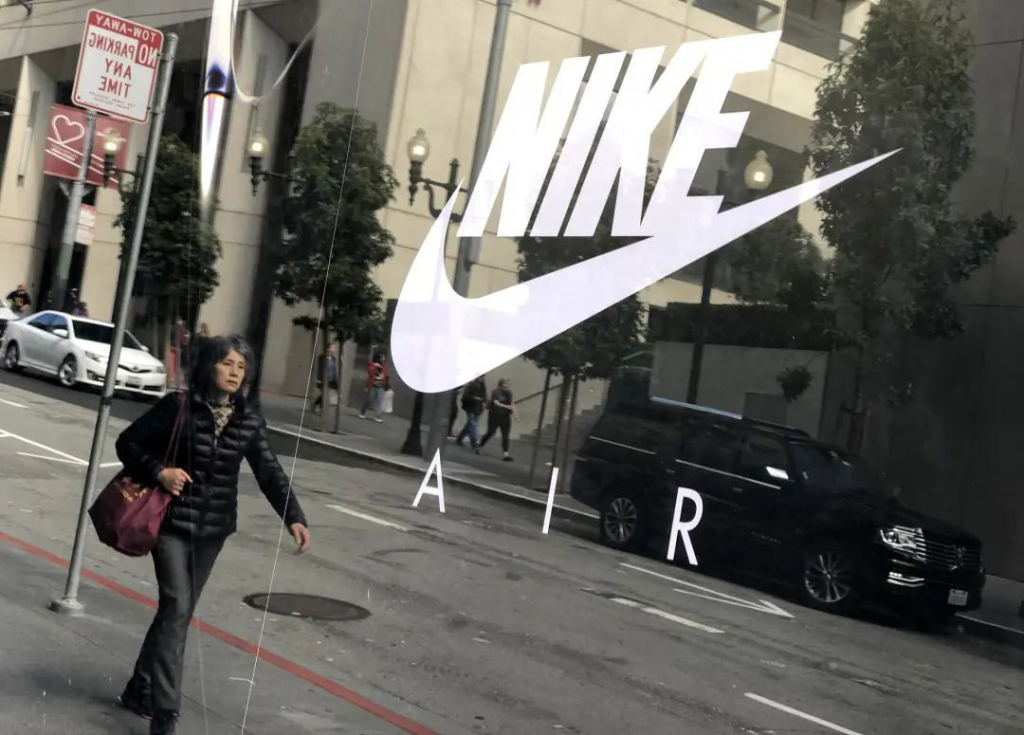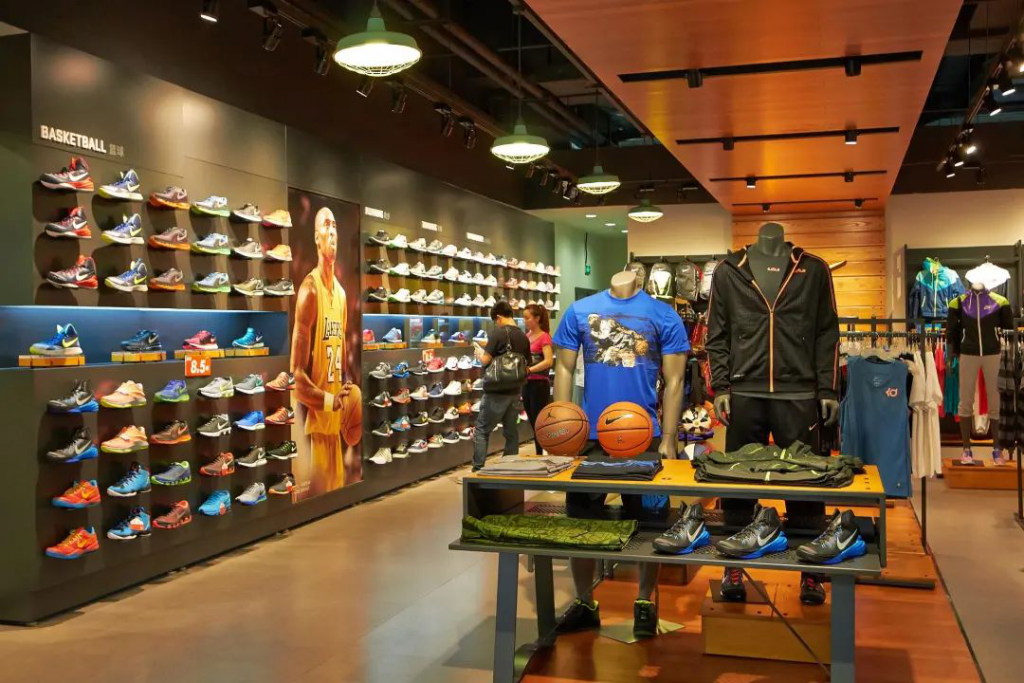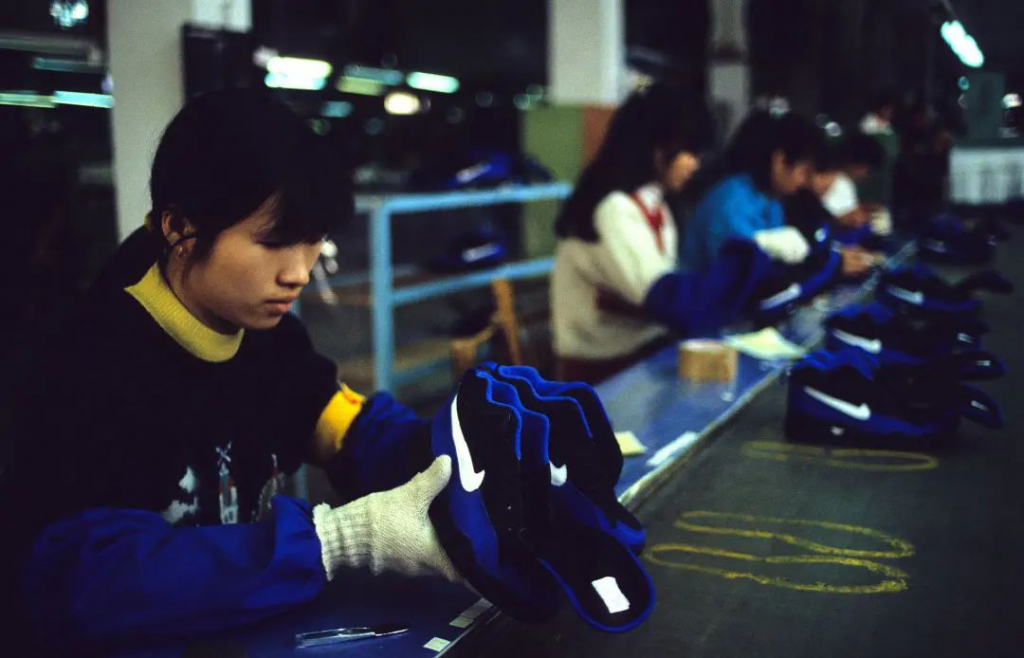
Nike had to perform reform. According to its financial report for the fourth quarter of fiscal year 2020 (March 1-May 31, 2020), revenue fell by 38% and net loss was US$790 million, a year-on-year decrease of 180%. Bloomberg even sharply commented that “this is Nike’s worst performance since 1998.”
Unexpectedly, the Chinese market, which was the first to recover, could not escape the layoff plan of international brands.
On November 3, according to Lanxiong Sports, Nike China will lay off nearly 20% of its staff in phases, involving about 400 people. The first phase started last week, with regional offices in Beijing and Guangzhou as the main area, and the Shanghai headquarters stabilized temporarily. It is worth mentioning that the organizational structure is also adjusted with layoffs, and many executives may leave because of layoff.
It is surprising why Nike is hurting the Chinese team struggling to recover when the international epidemic is not yet under control and some European countries even shut down the city again.
Why were layoffs in the first recovery?
Why does Nike lay off in Greater China?
Judging from the financial report alone, it is a bit surprising. The 2020 fiscal year report shows that Nike Greater China contributed US$6.679 billion in revenue, accounting for 1/5 of Nike’s total revenue. The exchange rate increased by 11% year-on-year on the basis of the same exchange rate, achieving double-digit growth for 6 consecutive years.
Especially since April, most of the self-operated and distributor stores in North America, EMEA (Europe, Middle East and Africa), APLA (Asia-Pacific and Latin America) have closed, and Chinese stores have become the locomotive of recovery.
Cheng Weixiong, a textile and apparel brand management expert and general manager of Shanghai Liangqi Brand Management Co., Ltd., told Caijing World Weekly that although Nike’s Chinese market has recovered well, compared with competing products, local brands, and the sharp increase in online business, there is a lot of room for digging, so a batch of physical store-oriented teams will be cut, but it is not ruled out that another batch of online-oriented teams will be added.
He further explained, “The main reason for the layoffs is the reduction in income caused by the impact of the epidemic, and the small reason is that although the Chinese market has recovered, it has not met the expectations of the headquarters, namely, the online business in the Chinese market has not been grasped well before the epidemic.”
This is how Zhang Qing, the founder of the sports consulting company, understood, “although the Greater China region is recovering quickly, Nike, Adidas, etc. have a high proportion of revenue in the European and American markets. If you want to increase revenue and reduce expenditure, you cannot avoid the Chinese market. Under the circumstances, he believes that the problem does not exist for local brands, “it is good to face the internal circulation in the mainland market.”

Global layoffs cost at least 1.3 billion yuan
In fact, Nike’s international layoffs storm came earlier.
In June of this year, Nike announced its global layoff plan, revealing that the company will reform the management structure completely. Nike CEO John Donahoe revealed the reason for the layoffs in an internal email-to expand more online sales channels in the future.
He revealed that the digital business has become Nike’s primary strategy to deal with the epidemic, and set a small goal: to increase the proportion of digital business sales from 30% in the previous quarter to 50%. Cheng Weixiong believes that with the increase in online investment and the decrease in physical stores, it is also the correct strategic choice to shrink the existing huge management organization appropriately.
On July 22, Nike officially announced a high-level adjustment and revealed that the cost of one-time dismissal of employees before tax is about 200 million to 250 million US dollars (about 1.34 billion to 1.68 billion yuan). According to an investor report from financial services company Heiner International, Nike is expected to lay off 7%-10%. If calculated according to Statista data in May this year, Nike employees 75,400, then 5300-7500 people will lose their jobs.
Nike had to perform reform. According to its financial report for the fourth quarter of fiscal year 2020 (March 1-May 31, 2020), revenue fell by 38% and net loss was US$790 million, a year-on-year decrease of 180%. Bloomberg even sharply commented that “this is Nike’s worst performance since 1998.”
Life of other international sports brands is also uncomfortable. Although Adidas did not reveal large-scale layoffs, at the end of September it replaced Gao Jiali, managing director of the Asia-Pacific region, an executive who has commanded Greater China for nearly 10 years. Also undergoing high-level changes is Under Armour, whose China managing director Mei Yuqing suddenly announced his resignation in early September. It can be seen that the adjustment of the Chinese market is inevitable under the harsh environment.

Will digitalization be the last straw?
Where will Nike go after the epidemic? Digitization becomes one of the bullseye.
For a long time, Nike only does brand and product development, and finds authorized distributors through online and offline channels. This is conducive to rapid and low-cost market development, it difficult to obtain user preference data and improve service quality because of being far away from consumers.
As a result, profits are also affected. Nike’s chief financial officer Matt Friend said that the gross profit margin of the digital business is about 10% higher than that of the wholesale business, and the customers on the website are more loyal, which can reduce Nike’s customer acquisition costs and increase the return on advertising expenditures.
Three years ago, Nike launched a “direct attack on consumers” strategy to increase digitalization. Under the epidemic, the disadvantages of physical stores have become more prominent, and Nike’s reform has also reached rocket speed.
Judging from the financial report for the first quarter of fiscal year 2021 (June 1 to August 31, 2020), with the exchange rate unchanged, the revenue of digital business grew at a rate of 83% year-on-year, giving a good start to the new fiscal year.
This even gave Nike the courage to break up with wholesalers-on August 24, Nike no longer sells products to Belk, Dillard, Zappos, Boscov, Bob’s Stores, Fred Meyer, EBLens, VIM, City Blue, a total of 9 brands wholesale Business customers, regain the initiative.
Nike China is not idle either. In November 2019, it even launched the Chinese version of the App. In addition to displaying products, it also launched services such as activities and sports courses. In March of this year, Nike also integrated into China’s hot live broadcast wave and held the Air Max Day 2020 cloud party at the Tmall flagship store. This is the first time that a sports giant will host its large-scale marketing activities in March each year on a third-party e-commerce company. At present, Nike’s official Tmall flagship store has 33.2 million fans, which is higher than Adidas’s 30.66 million.
During the epidemic, digitalization became the last straw for consumer brands. Typically, in August, Zara’s parent company Inditex Group announced that it would spend 1 billion euros on digital channels, and wanted to increase the proportion of online revenue in 2022 to over 25%, compared with 14% last year. Fast fashion brand GAP is more direct. At the end of October, it announced that it would close 350 stores by early 2024, which accounted for 30% of North American stores. In the future, it said that it wants e-commerce and non-shopping stores to carry 80% of the revenue.

Comments